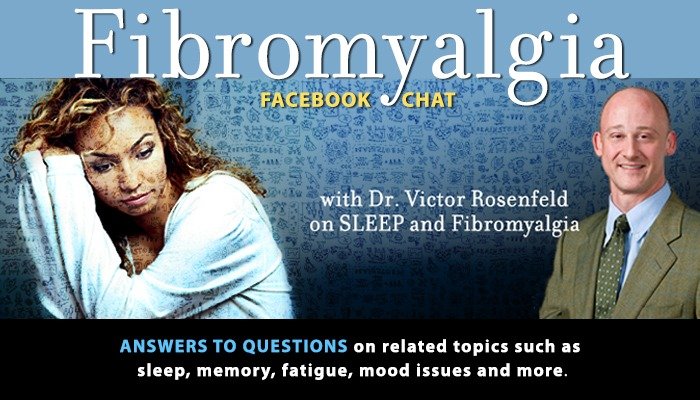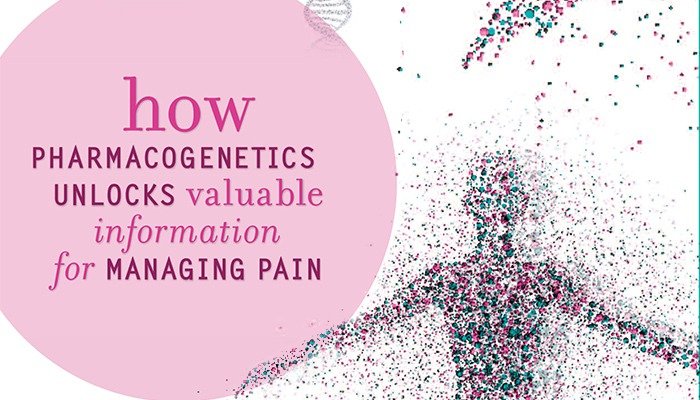Arthritis Pain

YOU HAVE ARTHRITIS.
YOUR JOINTS ACHE, YOU’RE FATIGUED AND YOU AREN’T SLEEPING WELL. PHYSICAL ACTIVITY MAY BE THE LAST THING ON YOUR MIND, YET EXPERTS SAY THAT AVOIDING MOVEMENT CAN ONLY MAKE YOUR ACHES AND PAINS WORSE. WHILE EXERCISE IS HIGHLY RECOMMENDED, TRY THIS OVERALL APPROACH FOR MANAGING OSTEOARTHRITIS AND RHEUMATOID ARTHRITIS.
{1} FIND THE SOURCE OF YOUR PAIN
“The pain can come from many different places,” explains Patience H. White, MD, MA, vice president of public health for the Arthritis Foundation. “Sometimes it’s inflammation from inside the joints; sometimes it’s because cartilage is worn away, and the bone rubbing on bone is very painful. There can also be periarticular pain, like bursitis and tendonitis, around the joints. In addition, you can actually have referred pain. For example, your knee hurts but it is physically fine; it actually pains from the hip that’s being reflected by the nerve patterns.”
If you’ve been diagnosed with arthritis, it’s best to revisit your rheumatologist when you’re experiencing new pain. He or she can help you determine the source and the best treatments. However, if you’ve never been diagnosed with arthritis but suspect you have it, visit your primary care physician. He or she can evaluate your pain, then refer you to a specialist if arthritis seems likely.
“Investigating the cause of your pain is critical,” says Dr. White, who is also a professor of medicine and pediatrics at George Washington University School of Medicine and Health Sciences. “Doing something for your knee isn’t going to be helpful if the pain is coming from your hip. Or, treating tendonitis when your pain is really from arthritis isn’t going to work. And, of course, there are different types of arthritis that can cause joint pain, and it’s important to be diagnosed with the right one.”
Dr. White also points out that sometimes multiple problems can occur at the same time. For example, a person can experience bursitis and arthritis simultaneously. “Fortunately, a lot of times it’s possible to separate them out,” she continues. “What you don’t want to do is have bursitis confused with end-stage osteoarthritis (OA) and get scheduled for a joint replacement. In any case, you don’t want to take the wrong approach.”
In getting to the bottom of your joint pain, be sure to tell your doctor specifics like when you get it, if it wakes you up at night, if it’s on both sides of your body, and whether it’s sharp, dull or burning. Such statements guide a physician in determining the cause of pain.
“Getting your health care providers to think about it with you should be your goal,” says Dr. White. “It helps them investigate the cause.”
{2} GET MOVING AND LOSE EXTRA WEIGHT
The next step in treating arthritis pain is to lose weight — particularly through physical activity. This can benefit anyone with arthritis, although it is especially helpful to those with OA, the most common form.
“Make sure you’re in your ideal weight range,” says Dr. White. “Obesity is 54 percent higher in adults with arthritis than those without, and that’s a big problem for joints.
“Every pound you gain is like four pounds across your knees,” she continues.“ So, if you gain just five pounds, that’s like having 20 extra pounds on your knees. The most common joints involved in OA, by far, are the knees, so losing weight is very important in reducing pain there. In fact, if you lose just 10 percent of your body weight, you can reduce your OA pain by half.”
Exercise will be an important component of your weight loss, and it can also benefit you in other ways. Strengthening and stretching the muscles and tendons around your joints helps them function better. The ideal forms of exercise for people with arthritis are walking, aquatic exercises, and stretching.
Melanie Woodroffe of Atlanta knows well the impact that the right exercise can have on arthritis. At just eight years old she was diagnosed with pauciarticular juvenile rheumatoid arthritis. Since then she says she’s experienced many highs and lows with the disease over the years — including a three-year remission in her 20s and a recent year where she couldn’t walk at all. As a naturally athletic person, she has always loved physical activity, and she missed it when she got out of the habit.
“After my really bad year, I decided to get out and move a lot more,” says Woodroffe. “It hit me that I was getting older and needed to practice self-care. You can depend on your doctor for some help, but you pretty much have to take control of your own body.”
Woodroffe’s program of self-care involves a lot of walking and stretching. “I have to keep myself constantly aware of the fact that if I’m able to stand up in the morning, I need to get out and walk,” she says.“Of course, there are days when that’s not possible when I really can’t move. But I can almost always do stretches in the mornings. I’ve found that not stretching is the worst thing I can do for my pain and mobility.”
Woodroffe also spends a lot of time at the pool doing water aerobics. Aquatic exercises are ideal for people with arthritis because the water takes the weight off the joints but still allows for strengthening and aerobic activity.
And having arthritis doesn’t mean you can’t work out at a gym. Just make sure you choose activities that are low-impact. If possible, seek the assistance of a physical trainer who has been certified by the American Council on Exercise in training people with arthritis.
You can use videos to assist your workouts at home. The Arthritis Foundation sells exercise videos and books designed for people with arthritis and also offers resources on where to find local classes in anything from tai chi to aquatics.
“The types of programs we highlight are evidence-based,” says Dr. White. “We’ve done the trials, and found that the people who did these exercises felt much better.”
{3} TAKE PRESCRIPTIONS DESIGNED FOR YOUR PARTICULAR KIND OF ARTHRITIS
Exercise and weight loss are universal treatments for arthritis pain: anyone can benefit from them. However, they won’t alter the inflammatory process of the disease, so when it comes to your specific type of the condition (there are over 100in the arthritis family) you also need to look at disease-modifying treatments. Otherwise, your condition will likely lead to disability and increased pain.
“There are things you can do for pain relief, but they can’t change the progression of your disease or its natural history,” says Dr. White. “For this, you need medications that are specifically designed for your condition.”
For instance, take rheumatoid arthritis (RA), the form of arthritis Woodroffe has. There are drugs that directly affect the auto-inflammatory process of the disease, including corticosteroids, biologics (such as Enbrel and Humira), and methotrexate.
Another example is gout, which also falls under the arthritis umbrella. The condition should be tackled primarily with corticosteroids and drugs that lower uric acid.
There aren’t disease-modifying drugs available for OA, but there are for most inflammatory types of arthritis, says Dr. White.
But keep in mind that if you don’t take measures to lose weight (as mentioned in step 2), you can still develop OA on top of your existing form of arthritis — even if your current condition is managed well.
{4} CONSIDER OVER-THE-COUNTER PAIN TREATMENTS AND SECONDARY PRESCRIPTIONS
While disease-modifying drugs are critical to the successful treatment of most forms of arthritis, there are plenty of over the counter (OTC) options when it comes to pain management. They include:
° Joint creams and gels, such as capsaicin or voltaren
° Support inserts for shoes and braces for knees
° Ice packs and heat packs
° Acetaminophen (Tylenol)
° Nonsteroidal anti-inflammatory drugs (NSAIDs) like aspirin, ibuprofen (Motrin and Advil), and naproxen (Aleve)
Acetaminophen and NSAIDs do carry some possible side effects, such as an increased bleeding risk with longterm use. Of the two groups, NSAIDs have a higher side effect profile. However, many people find that they block pain more effectively than acetaminophen.
At age 46, Woodroffe says she has relied on aspirin therapy for years. “When I was ten years old, my rheumatologist put me on high doses of aspirin,” she says. “For me, that has been the best thing for my pain, as basic as it might seem. I’m still on aspirin therapy. It causes me to bruise easily, but as long as I don’t start bleeding internally, I’m okay with that.”
Woodroffe says that in the past she’s also used corticosteroid injections. Another option includes lubricating hyaluronic injections.
There are other prescription medications that might help with the aches and pains related to your arthritis. “Fatigue is a huge component of inflammatory arthritis like RA,” says Dr. White. “That and the pain can lead to poor sleep. At that point, sleep aids and low-dose antidepressants can help a person feel better. And when your mood, sleep, and energy levels improve, you’re able to be more active, which is one of the primary goals in treating arthritis.”
{5} CHOOSE COMPLEMENTARY TREATMENTS WISELY
While many people swear by complementary, or alternative, treatments like acupuncture, Dr. White points out that there are no controlled trials showing that they effectively treat arthritis pain.
“As long as the treatment is not going to hurt you or break your pocketbook — and as long as you’re doing it under doctor supervision while still taking necessary medications — it’s okay to try,” says Dr. White. “And then, if you find something that works, that’s great. Just keep in mind that some things — particularly some supplements — can interfere with the treatments your doctor has you on.”
{6} KEEP IN STEP WITH PAIN MANAGEMENT
There is an endless variety of treatments you can pursue to manage your arthritis pain. In extreme cases, narcotic painkillers or surgical interventions may be necessary, but medical and lifestyle approaches often work.
“The number one thing people talk about with arthritis is the pain — even above limited mobility,” says Dr. White. “But arthritis pain can be managed quite well. You have to ask questions of your doctor, you have to get the weight off and you have to work with your doctor to find out what methods work best for you.” {PP}
PainPathways Magazine
PainPathways is the first, only and ultimate pain magazine. First published in spring 2008, PainPathways is the culmination of the vision of Richard L. Rauck, MD, to provide a shared resource for people living with and caring for others in pain. This quarterly resource not only provides in-depth information on current treatments, therapies and research studies but also connects people who live with pain, both personally and professionally.
View All By PainPathways






